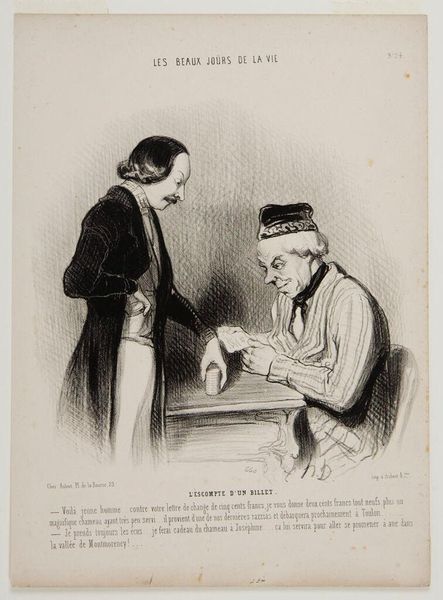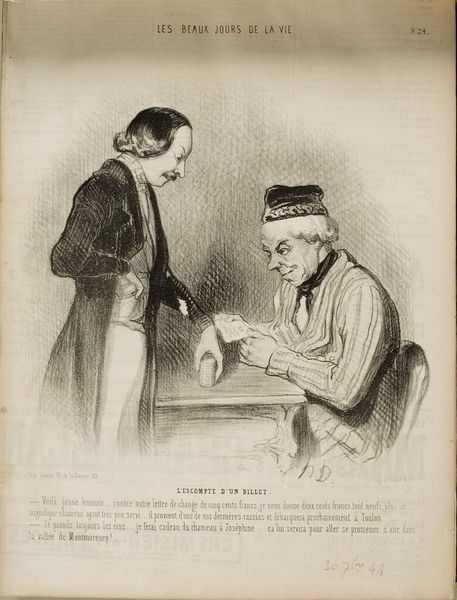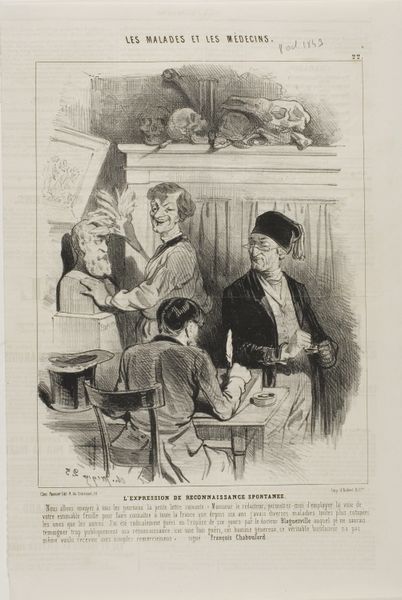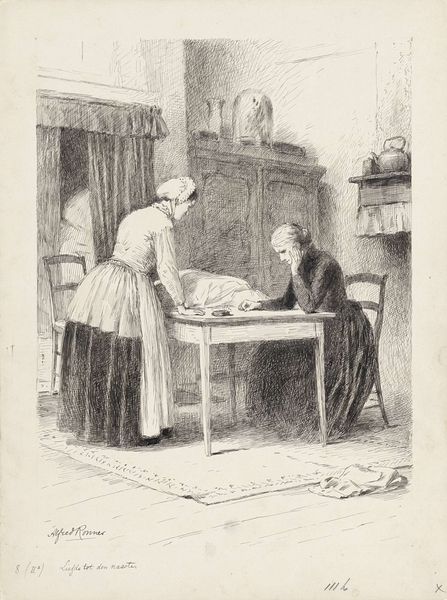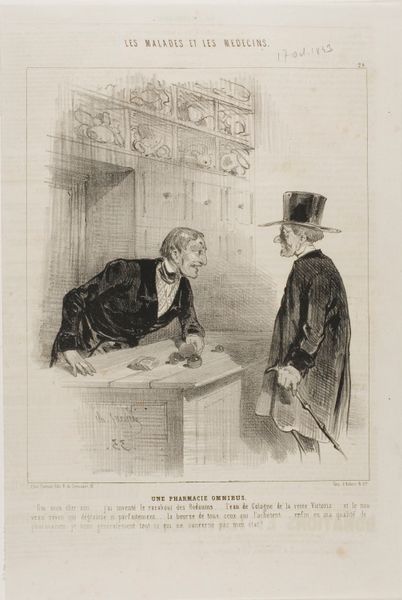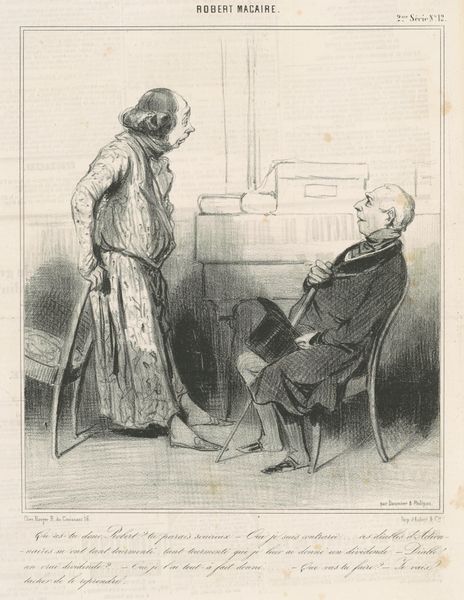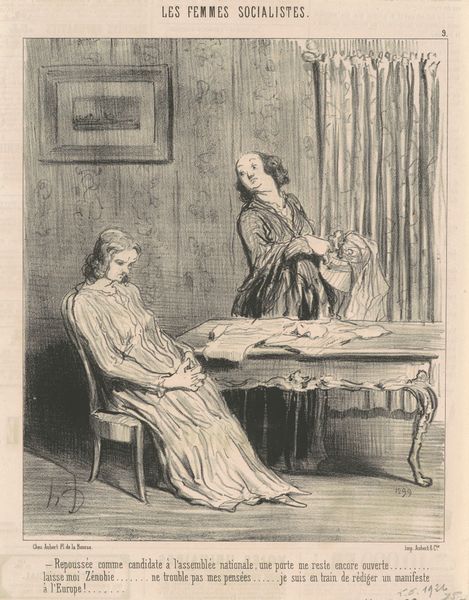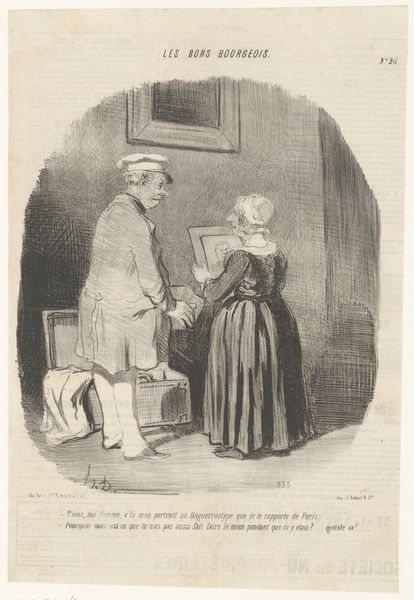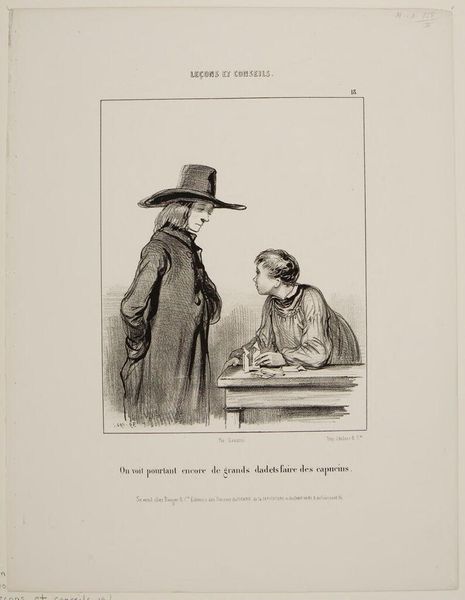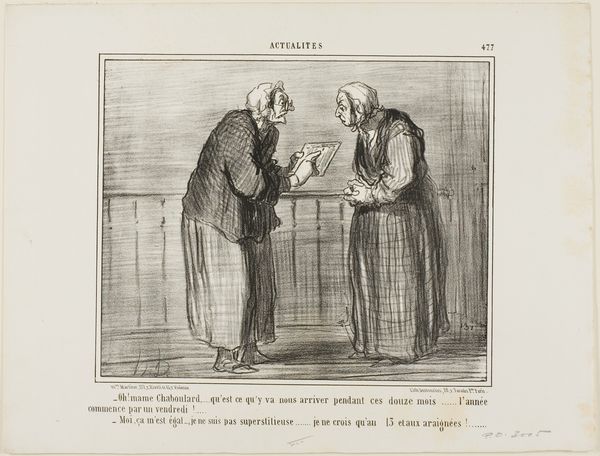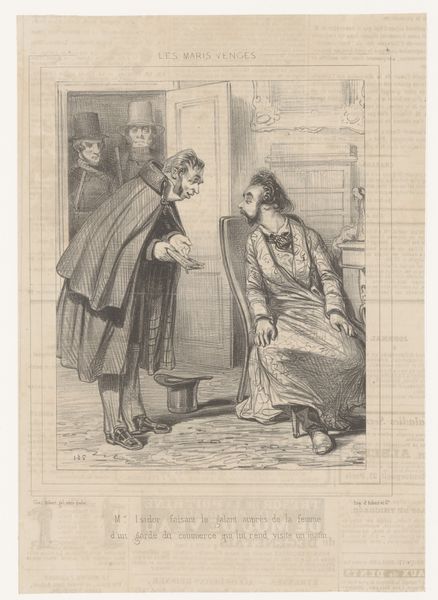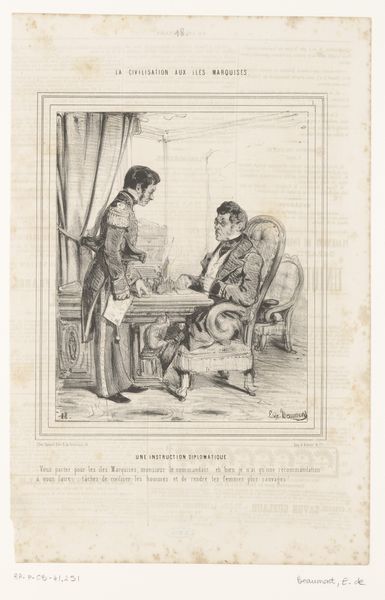
drawing, lithograph, print, pencil
#
portrait
#
drawing
#
16_19th-century
#
lithograph
# print
#
caricature
#
caricature
#
pencil drawing
#
pencil
#
genre-painting
#
academic-art
#
realism
Copyright: National Gallery of Art: CC0 1.0
Curator: Here we have Honoré Daumier's lithograph, "L'Escompte d'un billet," created in 1844. It offers a glimpse into 19th-century Parisian life. Editor: The contrast immediately strikes me. The heavy shadows cast on the standing figure compared to the brighter, almost comical rendering of the seated man creates a sense of unease and imbalance. Curator: Indeed. Daumier often used his art as social commentary. The lithograph, with its wide circulation, became a powerful tool for critiquing the bourgeoisie and the political landscape. Here, he seems to be highlighting financial transactions, likely exploring themes of exploitation and class disparity in 1840s France. Editor: The composition is rather stark, wouldn't you say? Notice how Daumier directs our gaze with the line of the table leading straight to the money-lender’s face. The stark simplicity amplifies the tension. It's not just what's depicted, but how. Curator: And it's worth noting how Daumier navigates censorship. While explicitly political, the scene's vagueness allows it to circulate while still conveying its message of societal corruption. The title, "The Discounting of a Bill," itself speaks to the exploitative lending practices of the time. It reveals Daumier’s alignment with Republican ideals, in his critical analysis of social exploitation. Editor: Technically, the hatching and cross-hatching contribute so much. Look at how they model the forms, creating a tangible texture that is almost tactile. He’s so economical with his lines! Curator: Daumier understood his audience. He created works accessible to the growing middle class, who may not have visited the Louvre, but certainly encountered his lithographs in newspapers and print shops. He exposed financial inequalities to people often experiencing its burdens themselves. Editor: For me, Daumier's formal choices—the contrast, the harsh lines—aren't merely representational; they are intrinsic to understanding the emotional weight and meaning of the scene. The work’s effect rests upon these calculated choices as much as the commentary. Curator: He masterfully integrated artistic skill with social critique. A talent for us all to take inspiration from today. Editor: Indeed. It leaves one pondering on how artists can cleverly expose economic inequality with such powerful effect even now.
Comments
No comments
Be the first to comment and join the conversation on the ultimate creative platform.
